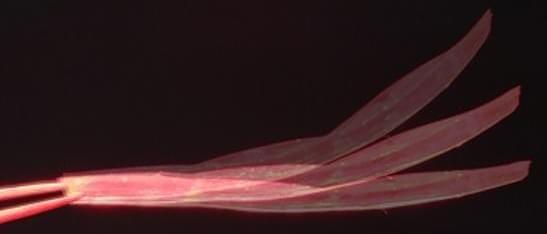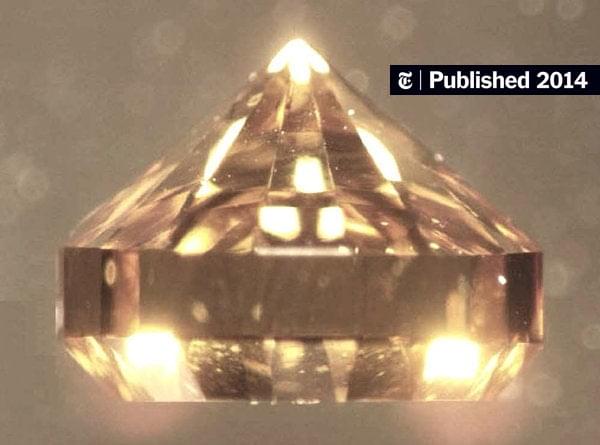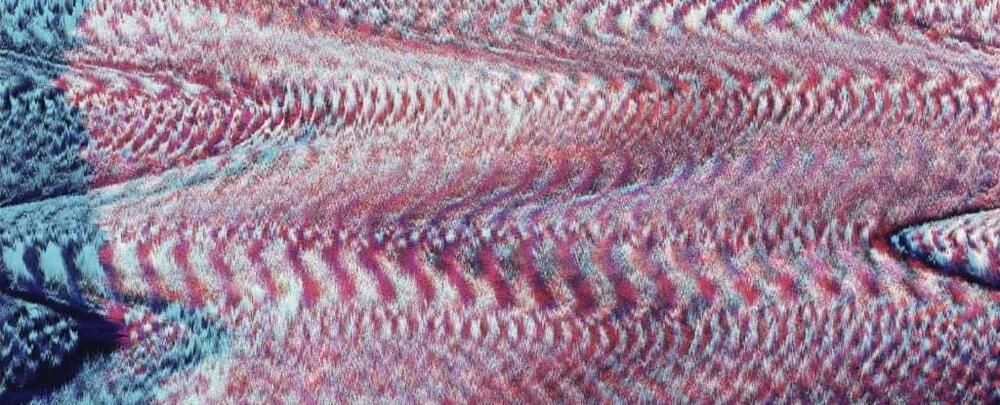The concept of Transhumanism has been around for a long time, but it actually looks like it’s starting to happen. In today’s video, we will look at how humans are already merging with machines and what will come next. IPhone wireless charging cases — https://amzn.to/3bz0oRg.
IPhone Backup — https://amzn.to/3w8Usbj.
Wireless Earbuds — https://amzn.to/2ZTjwau.
IPhone Bargains — https://amzn.to/3jXvCGb**** Gears and Equipment we use****
1. Fully Automatic Espresso Machine — https://amzn.to/3bdHcbr.
2. Perfect Desk Chair — https://amzn.to/2ZlMNd2
3. Wireless Mechanical Keyboard — https://amzn.to/3pA71Lw.
4. Wireless DTS Headphone — https://amzn.to/3juz2Qv.
5. Vocal Microphone — https://amzn.to/2XEDsN4
6. UltraWide Monitor — https://amzn.to/3jyteWg**** Free Handy Tools YOU must try ****Tubebuddy – https://bit.ly/3y0SOc6
In-depth channel/video analysis, SEO statistics, Channel optimizationHere at Future Now we aim to bring you the most informative, fascinating and engaging Technology videos on YouTube.🔔 Subscribe To Our Channel: https://bit.ly/3nRoVH8
Copyright Disclaimer:
Under section 107 of the Copyright Act 1976, allowance is made for “fair use” for purposes such as criticism, comment, news reporting, teaching, scholarship, education and research. Fair use is a use permitted by copyright statute that might otherwise be infringing. Non-profit, educational or personal use tips the balance in favor of fair use. *DISCLOSURE*
We are affiliated, but not sponsored by any product featured in this video.
Some links in the description are affiliate links to products, which means if you click on them and buy the product, we will receive a small commission.
Not being sponsored allows us to keep our own opinions and provide product reviews without bias. From the millions of products, we appreciate your support.#Exoskeleton #Cyborg #Transhumanism
Get the latest international news and world events from around the world.

New technique produces hydrogen from banana peels within a few milliseconds
Over the last few decades, the high consumption of energy from fossil fuels has promoted a massive increase in greenhouse gas emissions worldwide. To address this, scientists have been searching for an alternative, renewable sources of energy.
One of the main candidates is hydrogen produced from organic waste, or biomass, of plants and animals. Biomass also absorbs, removes, and stores CO2 from the atmosphere, while biomass decomposition can also bring us ways to negative emissions or greenhouse gases removal.
Now, EPFL researchers have developed a way to maximize hydrogen yields from biowaste within a few milliseconds. The method uses rapid photo-pyrolysis to convert dried biomass powders such as banana peel into valuable gases and solids, including hydrogen and biochar.
Planet-scale MRI: High resolution illumination of Earth’s interior down to the planet’s core
Earthquakes do more than buckle streets and topple buildings. Seismic waves generated by earthquakes pass through the Earth, acting like a giant MRI machine and providing clues to what lies inside the planet.
Seismologists have developed methods to take wave signals from the networks of seismometers at the Earth’s surface and reverse engineer features and characteristics of the medium they pass through, a process known as seismic tomography.
For decades, seismic tomography was based on ray theory, and seismic waves were treated like light rays. This served as a pretty good approximation and led to major discoveries about the Earth’s interior. But to improve the resolution of current seismic tomographic models, seismologists need to take into account the full complexity of wave propagation using numerical simulations, known as full-waveform inversion, says Ebru Bozdag, assistant professor in the Geophysics Department at the Colorado School of Mines.

Exclusive: Ukraine has started using Clearview AI’s facial recognition during war
March 13 (Reuters) — Ukraine’s defense ministry on Saturday began using Clearview AI’s facial recognition technology, the company’s chief executive told Reuters, after the U.S. startup offered to uncover Russian assailants, combat misinformation and identify the dead.
Ukraine is receiving free access to Clearview AI’s powerful search engine for faces, letting authorities potentially vet people of interest at checkpoints, among other uses, added Lee Wolosky, an adviser to Clearview and former diplomat under U.S. presidents Barack Obama and Joe Biden.
The plans started forming after Russia invaded Ukraine and Clearview Chief Executive Hoan Ton-That sent a letter to Kyiv offering assistance, according to a copy seen by Reuters.


When Diamonds Are Dirt Cheap, Will They Still Dazzle?
Circa 2014
As a seventh grader, I was lucky to land the job of ball boy for the Brooklyn Dodgers during their annual late-March exhibition games in Miami. The experience left me with fond memories — of Roy Campanella smoking a cigar as he stroked line drives in the batting cage, of a young Sandy Koufax throwing harder than seemed humanly possible and of an aging Jackie Robinson struggling to remain in the lineup.
Oddly, however, my most vivid memory is of the Dodgers’ longtime batboy as he sat in the locker room producing autographed baseballs. He’d twist his hand at odd angles as he scrawled replicas of the signatures of Duke Snider, Pee Wee Reese and other Dodger legends. To my untrained eye, the balls he inscribed were indistinguishable from those signed by the players themselves.
Handwriting experts probably could have identified his forgeries without difficulty, but technology has progressed considerably since then. In many domains, perhaps even including signed baseballs, it’s becoming possible to produce essentially perfect replicas of once rare and expensive things.

Death-Bringing ‘Brain Tsunamis’ Have Been Observed in Humans
Back in 2018, researchers were able to study the moment brain death becomes irreversible in the human body for the first time, observing the phenomenon in several Do Not Resuscitate patients as they died in hospital.
For years, scientists have researched what happens to your brain when you die, but despite everything we’ve found out, progress has been stymied by an inability to easily monitor human death – since physicians are conventionally obliged to prevent death if they can, not monitor it as it takes hold.
What this means is most of our understanding of the processes involved in brain death come from animal experiments, strengthened with what we can glean from the accounts of resuscitated patients disclosing their near-death experiences.


First-ever recording of dying human brain reveals dreaming-like activity
𝐍𝐞𝐰 𝐀𝐭𝐥𝐚𝐬:
The Neuro-Network.
𝐅𝐢𝐫𝐬𝐭-𝐞𝐯𝐞𝐫 𝐫𝐞𝐜𝐨𝐫𝐝𝐢𝐧𝐠 𝐨𝐟 𝐝𝐲𝐢𝐧𝐠 𝐡𝐮𝐦𝐚𝐧 𝐛𝐫𝐚𝐢𝐧 𝐫𝐞𝐯𝐞𝐚𝐥𝐬 𝐝𝐫𝐞𝐚𝐦𝐢𝐧𝐠-𝐥𝐢𝐤𝐞 𝐚𝐜𝐭𝐢𝐯𝐢𝐭𝐲
“𝙈𝙮 𝙬𝙝𝙤𝙡𝙚 𝙡𝙞𝙛𝙚 𝙛𝙡𝙖𝙨𝙝𝙚𝙙 𝙗𝙚𝙛𝙤𝙧𝙚 𝙢𝙮 𝙚𝙮𝙚𝙨” 𝙞𝙨 𝙖 𝙥𝙝𝙧𝙖𝙨𝙚 𝙬𝙚 𝙤𝙛𝙩𝙚𝙣 𝙝𝙚𝙖𝙧 𝙧𝙚𝙜𝙖𝙧𝙙𝙞𝙣𝙜 𝙣𝙚𝙖𝙧-𝙙𝙚𝙖𝙩𝙝 𝙚… See more.
“My whole life flashed before my eyes” is a phrase we often hear regarding near-death experiences – and there just might be some truth to it. Scientists have recorded the activity of a dying human brain for the first time ever, revealing brain wave patterns related to processes like dreaming and memory recall.

On the Edge: New Magnetic Phenomenon Discovered With Industrial Potential
Working with the tiniest magnets, Hebrew University discovers a new magnetic phenomenon with industrial potential.
For physicists, exploring the realm of the very, very small is a wonderland. Totally new and unexpected phenomena are discovered in the nanoscale, where materials as thin as 100 atoms are explored. Here, nature ceases to behave in a way that is predictable by the macroscopic law of physics, unlike what goes on in the world around us or out in the cosmos.
Dr. Yonathan Anahory at Hebrew University of Jerusalem (HU)’s Racah Institute of Physics led the team of researchers, which included HU doctoral student Avia Noah. He spoke of his astonishment when looking at images of the magnetism generated by nano-magnets, “it was the first time we saw a magnet behaving this way,” as he described the images that revealed the phenomenon of “edge magnetism.”